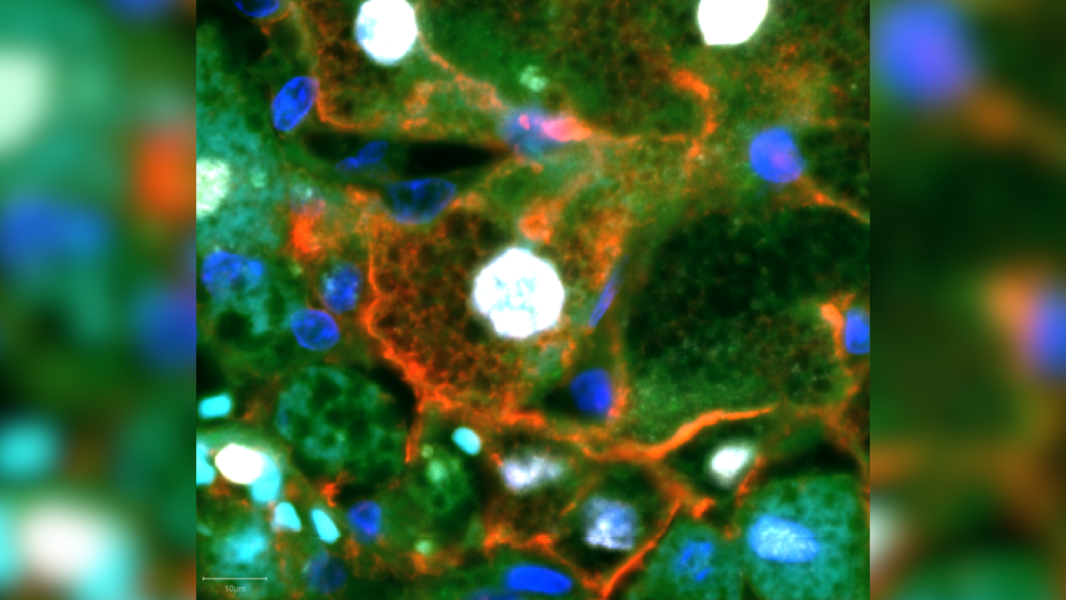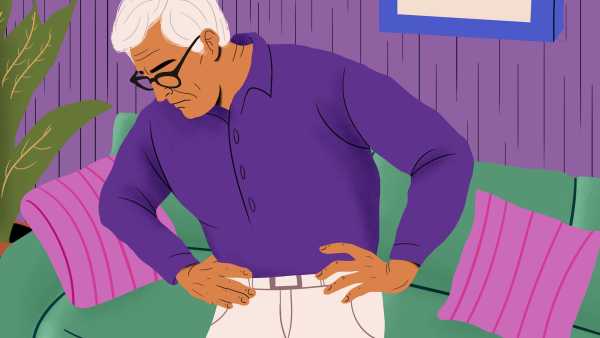
Known as leader cells, they move to the edge of the wound, taking up healthy tissue to fill in the damaged area. In this illustration, the nuclei of these cells are shown in white and their membranes in red (Image credit: Kylie Matchett (University of Edinburgh))
Researchers have discovered a new type of cell in the liver that plays a critical role in the process of repairing damage.
These “leader cells” are responsible for moving healthy tissue to wounds as they heal, essentially filling in the voids and promoting cellular regeneration.
The knowledge gained could be used to develop new therapeutic approaches to treating liver disease, the scientists say. They outlined their findings in a paper published May 1 in the journal Nature.
“Modern technology has allowed us to study human liver regeneration at high resolution for the first time, making it much easier to identify the cells that are critical for liver repair,” said Dr Neil Henderson, co-author of the study and a professor at the Centre for Inflammation Research at the University of Edinburgh in Scotland. “We hope that our findings will accelerate the development of much-needed new treatments for patients with liver disease.”
The liver plays an important role in detoxifying the blood, producing bile to remove food waste, and metabolizing drugs. It also has an amazing ability to recover from damage, such as viral infections (such as hepatitis), toxic injury, and alcoholic liver disease.
However, sometimes the liver can be so damaged that it cannot repair itself quickly enough, leading to acute liver failure, which affects more than 2,000 Americans a year. This condition can develop within 48 hours, potentially causing symptoms such as jaundice, excessive bleeding, brain swelling, and multiple organ dysfunction.
Depending on the cause, some cases of acute liver failure, such as those caused by poisoning, may be reversible with medication. However, in severe cases, the only solution is an emergency liver transplant. There is therefore an urgent need for new treatments that enhance the liver's natural ability to heal itself, say the authors of the new paper.
To better understand this healing process, Henderson and his team examined liver tissue from patients with acute liver failure who later received transplants. Although many of these patients’ liver cells were able to divide, their livers still showed significant damage. So the team wondered whether liver repair required more than just replacing damaged cells.
The team ended up sequencing the genes of every liver cell, comparing the genes of patients with acute liver failure with those of healthy people. This allowed them to create an “atlas” of liver regeneration, showing which cells were activated and when during the repair process, including newly identified leader cells.
The team also observed these cells in mice, where they helped the liver repair itself after acetaminophen-induced injury. They noticed that during wound healing, the leader cells were the first to quickly close the wound before cell proliferation further strengthened the repair site. This suggests that the liver prioritizes wound closure before new tissue is created to prevent bacteria from the gut from entering and causing a serious infection, the authors note in the paper.
Have you ever wondered why some people gain muscle mass more easily than others, or why sun exposure causes freckles? Send us your questions about how the human body works to [email protected] with the subject line “Health Desk Q,” and you might see your question answered on our site!
Sourse: www.livescience.com





